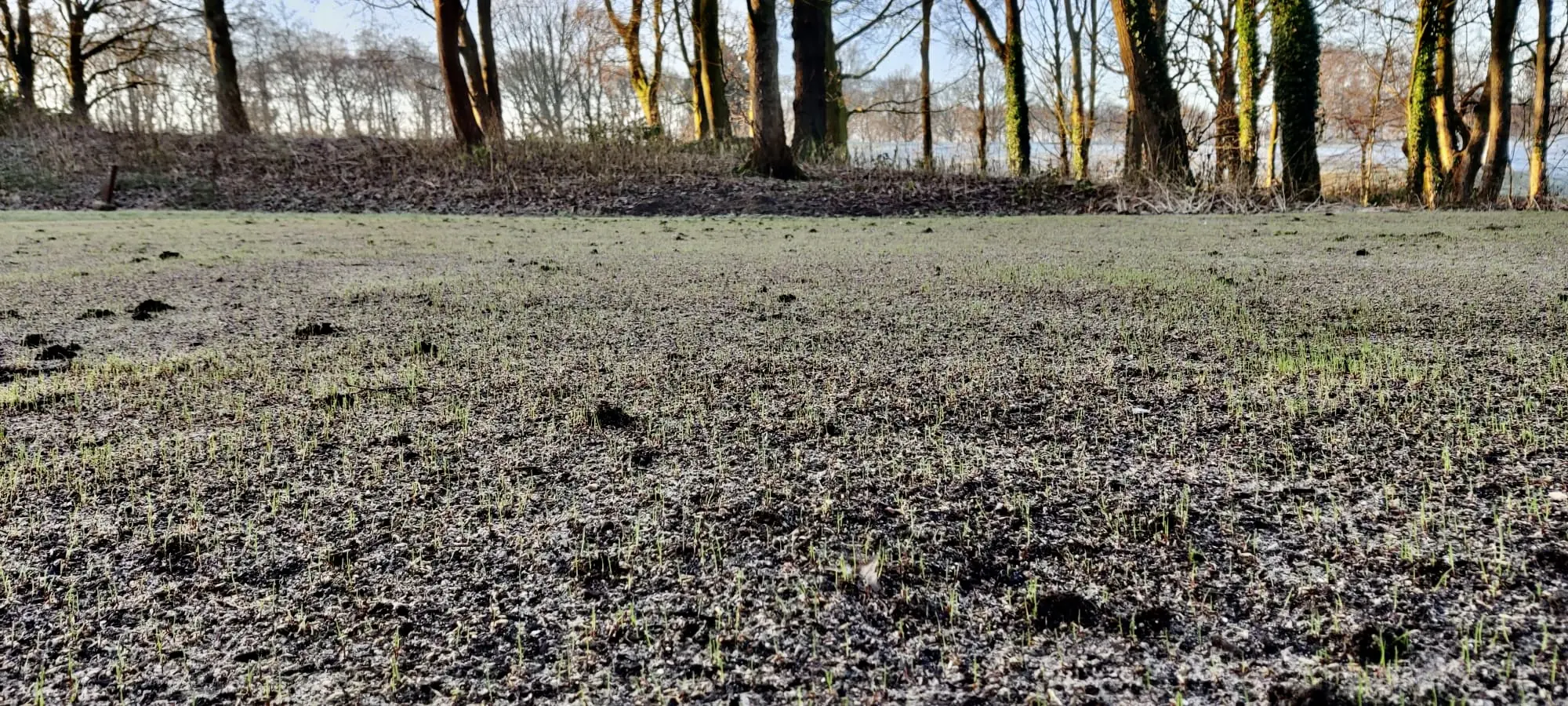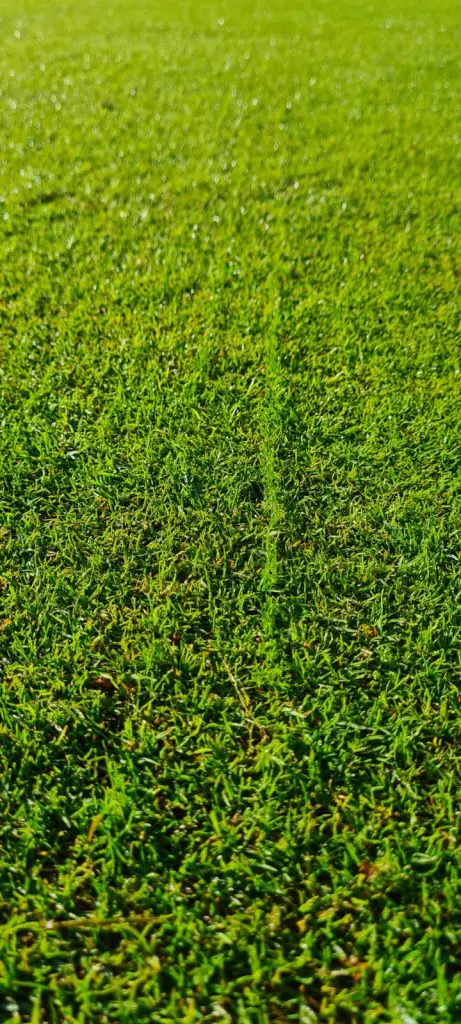Why cold-seeding is used by the top UK greenkeepers
Meet the top UK greenkeepers who are cold-seeding proactively in winter and early spring to enhance the density and composition of swards.

With myths surrounding this method, why are we championing cold-seeding in a golf course overseeding schedule? Well, the fact is that with hectic golfing calendars and unprecedented pressures on surface performance and appearance, greenkeepers can no longer rely on a single-season renovation.
Initially, we must consider the practice of golf overseeding as a maintenance procedure. Not as a major renovation that stops golfers from playing. The right approach can ensure there is minimal disturbance to the playing surface. This makes it easier to schedule, whereas a major renovation could fall victim to a schedule change or outright cancellation.
Steve Mucklow of Beau Desert Golf Club in Cannock is a firm believer in seasonally overseeding greens. “The spring overseed is the first of four yearly overseeds. It goes hand in hand with a light greens renovation and biology application.”
Proactive seeding to improve species composition
For the greenkeepers who want to improve their species composition and achieve a sward that can withstand stress and offer disease resistance. You need to start overseeding more often, including the colder months. You won’t need to drill larger quantities. But more frequently during the year to proactively improve your surfaces rather than constantly repairing seasonal wear and damage.
Steve Hemsley of Penwortham Golf Club in Preston echoes this sentiment. “I seed in the early spring to help fill any gaps from winter damage and to help establish a better sward composition.”
Mark Fry of Whittington Heath Golf Club in Lichfield also agrees. “I seed in the early spring to encourage new growth and help repair any disease scars.”
What does overseeding a golf course entail?

You won’t see germination for a while when overseeding golf greens in colder months. Ultimately, a successful overseed will be determined by how many seedlings survive and thrive to become mature plants over the following months.
Putting grass seed in the ground from January to April will help achieve this. Dan Tyrell of West Derby Golf Club explains the benefit. “I seed in early spring so that the sward can improve as the year goes by.”
Cold seedlings emerge slower in the low temperatures of early spring and the germination percentage is lower. However, those seedlings will benefit from winter cutting heights and reduced playing pressure. They will also be hardened to withstand disease and stress pressure later in the year.
Jonny Roberts of Preston Golf Club agrees. “We have great seed germination in the spring and it’s a period where we aren’t pushing the surfaces yet.” In contrast, seedlings planted in late summer have the advantage of good soil temperatures and rapid growth but are less prepared to cope with stress.
When discussing cold-seeding in the past, we have encountered fears of time-wasting and that the seed is at risk of rotting. However, we know from on-course testing and meeting greenkeepers that seeds can rest happily in the soil until the conditions are right.
In fact, Dale Housden of Drayton Park Golf Club in Tamworth finds that early spring is ideal for overseeding golf course greens. “Generally, our early springs have consistent temperatures to give the best chance of germination. It also allows us to return the surfaces back to normal while not affecting the germination period.”
How do greenkeepers undertake cold-seeding?
Whether overseeding golf course fairways or greens, greenkeepers have found that cold-seeding can be a beneficial method in their annual strategy. Our experts have met with seven highly experienced greenkeepers who were willing to share their cold-seeding insights.
“We use either a drop spreader or a cyclone spreader after a verticut or scarify,” Steve Hemsley reveals. Mark Fry is another greenkeeper who advocates cyclone spreading. “We apply over aeration holes using a cyclone spreader and mix the seed with fertiliser as a carrier.”
Meanwhile, Dan Tyrell likes to use a disc seeder. “If the budget is tight, I will use a spreader but prefer to use a disc seeder as I find it improves the germination.”
Dale Housden also likes to use a disc seeder, though intends to overseed with a dimple seeder in 2022. “Most recently, we have used a double-disc seeder with great success but will use a dimple seeder this year.”
Steve Mucklow of Beau Desert Golf Club in Cannock is another dimple believer. “We always use a dimple followed by a light fendress then brush and roll.”
Lee Purvis of Northenden Golf Club in Manchester explains the merits of dimple seeding. “The machine is generally easier to manoeuvre and is more compact than a disc seeder. I can seed at multiple angles across the green instead of seeding the same way all the time.”
007 creeping bentgrass a favourite
As for their preferred grass variety, 007 creeping bent has become a firm favourite among the greenkeepers we spoke to. Among the benefits cited were strong germination and disease resistance. Dale Housden added that he found 007 to be “less needy on water and fertiliser.”
007 can also outcompete Poa annua, Steve Mucklow revealed. “We want to outcompete Poa and change the composition for better disease resistance.”
Steve agrees, though also appreciates the visual appeal of 007. “I use 007 due to its fineness of leaf, colour, quick establishment and it will thicken the sward and compete against Poa.”
Of course, playability also matters. In addition to offering drought tolerance, Lee Purvis is of the opinion that “007 is the best surface to putt on bar none.” As for Jonny Roberts, he prefers AberMajesty browntop bent because he’s carrying out a species composition change.
For more details on cold-seeding and other seasonal golf course overseeding methods, please use the resources on our proactive seeding page.


